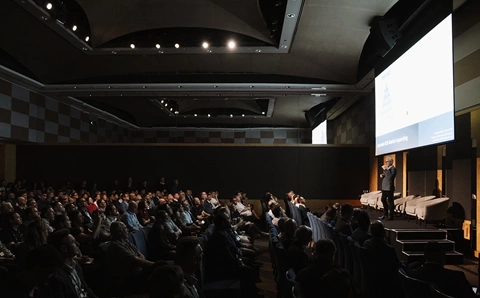As Australia's largest dedicated game retailer, EB Games should know everything there is to know about selling consoles. But Nintendo's mega-hyped Mini NES taught the retailer a lesson about squeezing more out of Amazon Web Services.
Before migrating to AWS in September 2016, EB Games had a problem: website load times could last up to 20 seconds, leaving impatient gamers frustrated with its online store.
The retailer's US parent company, Gamestop, decided to move all of the group's websites to Amazon Web Services. The move aimed to pre-empt the Christmas trading period, EB's busiest time of year.
EB's website and online store were previously hosted in a third-party data centre in Sydney.
The retailer's customers were heavy online shoppers. Over the last five years, the average website traffic for EB's online store grew 250 percent, and peak traffic up to 700 percent. However, customers could be left waiting for an average of 9 seconds for a page to load, and up to 20 seconds during peak traffic.
When its contract with the co-location provider was up, EB began the process of migrating to AWS. The retailer set out to rework its internally developed e-commerce platform to make the best use out of the public cloud.
The e-commerce platform is written in .NET, and was a mixture of microservices and a monolithic architecture. The platform is still written in .NET, but was heavily refactored to take advantage of AWS.
"Day-to-day performance is better in AWS; we found that actually better under load because of the caching," EB Games senior technology manager Kevin Clarke told CRN. "We didn't just do a lift-and-shift from infrastructure. We re-engineered the website to make use of the Amazon platform, to use it as a platform-as-a-service."
Website load times were cut dramatically to just 1.6 seconds during peak times on AWS, said Clarke.
The new site uses a range of AWS products, including EC2, RDS, Elasticcache, ELB, Route53, SQS, Lambda, and S3.
EB tapped two partners for professional services to help with the migration: award-winning application developer and enterprise cloud solutions provider Readify, and Brisbane managed IT and AWS expert Idea 11.
"We wanted to work with partners who have a progressive mindset, who wanted to move towards a DevOps cloud infrastructure way of doing things," said Clarke.
EB Games also had costs to consider, and couldn't justify forking out to upgrade infrastructure to accommodate for one or two days of above peak traffic.
"We found that we actually saved in operational costs while increasing performance. We've taken cost efficiencies from an operational/depreciation cost and can now actively look for how we can drive more efficiencies," said Clarke.
Next: Lessons from the mania over the Nintendo Mini NES
The new public cloud environment was soon put to the test when pre-orders opened up for the Mini NES, Nintendo's revamped Nintendo Entertainment System, originally released in 1983.
When online orders opened up on 14 November, the demand was so high that EB's online store crashed twice, leaving some customers missing out.
According to a company statement, the website typically receives about 500,000 page views on any given Tuesday. When the Mini NES came online, the website hit 7.5 million.

It wasn't just EB that was crippled by the demand. Amazon's own store crashed as well following reports of low supplies of the console.
Clarke said there was no possible way to account for the demand for the Mini NES.
"In co-lo, we would have had no hope dealing with the Mini NES. The capacity would be nowhere near possible. It's just a new paradigm where you need to fully embrace it to work in this ecosystem. The thing is, you're never going to have enough capacity."
Clarke said that the IT team took away lessons from the Mini NES incident to prepare for its busiest day of the year, Mad Monday.
"We found that the efficiencies in AWS helped us immensely in Mad Monday. We cut down average load time to 2.2 seconds," he said.
"The reason we did so well on Mad Monday was after the Mini NES, we used a load testing product, RedLine Load Testing, in Amazon and had a much bigger focus on website performance. We had to reset what was considered normal."




.png&h=142&w=230&c=1&s=1)



_(21).jpg&h=142&w=230&c=1&s=1)



.jpg&w=100&c=1&s=0)
_(8).jpg&w=100&c=1&s=0)









